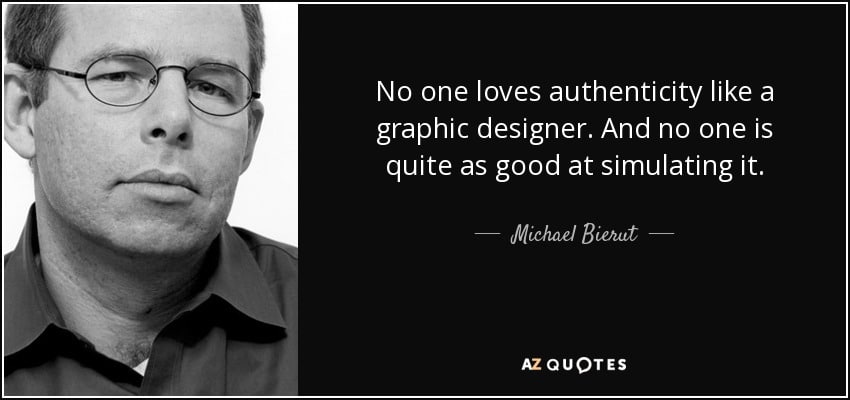Michael Bierut on avoiding Comic Sans, being terrified of Emojis, and why flea markets teach design better than museums

Hailed as “the man who shattered Saks Fifth Avenue’s fusty insignia and created Hillary Clinton’s controversial campaign logo,” by the Wall Street Journal, Michael Bierut is a prominent name in the graphic design industry. Bierut recently gave an interview on the magic of graphic arts and exactly why it is indispensable.
The interview started with him reminiscing on how, forty years ago, graphic arts was in the category of black magic, an esoteric subject which only a few people understood. Yet these days, graphic arts has become so indispensable that as Mr. Bierut said, “If Google changes its logo, everyone is expected to have an opinion about it.” And everyone does.
That being the case, when any major company or brand changes their logo, the public has an opinion. Turns out, the public cares deeply about visual communication, but it’s somewhat poorly trained on the mechanisms behind it. This ties in to what Mr. Bierut said in the interview – that every act of visual communication is, in every aspect designed in order to convey a message. And being that Bieruit is also a senior critic in graphic design at the Yale School of Art, he does have experience.
“Every act of visual communication, back to cave paintings, is designed to convey a message,” said Beruit in his Wall Street Journal interview. “Graphic design is the whole series of decisions that get made to shape that message.”
In line with the said article, there comes a series of questions thrown at Mr. Bierut and which he seemed to have happily complied, giving a glimpse of what a master graphic designer’s life is like. The questions started with how Mr. Bierut’s day usually starts – to which he answered – is the same routine – brush his teeth, run a few miles, water his flowers by the window and get a train to New York. Then there comes questions about his most important tools, devices he can’t quit, even the design books he always returns to read time and time again.
“I have worked with the documentary filmmaker Errol Morris, who conducted an online survey and discovered that people are more inclined to believe something printed in Baskerville. It has an amazing refinement and credibility.” – Michael Bierut in his WSJ interview
Knowing that he always has something to strive for, even when he’s a professional in this field, demonstrates the dynamism of the design industry. Poignantly, Mr. Bierut expressed his creative and professional opinion on ways to learn graphic design. When you can’t take a course or degree program, he urges us to travel – and often. Visit great cities like Tokyo, Marrakesh or Paris and scour flea markets, because every ‘junky’ item lost in those flea markets has the soul of design at its core, and will always show you more about design history than what you’d see at any museum.
“As a graphic designer, I find emojis terrifying—a soulless reductive endpoint. If Shakespeare is at one end, an emoji is at the other. At least if someone puts a smiley face over the “i” in their name, there is some gesture of personalization, not a mass-produced symbol that looks like it comes off the assembly line of Amalgamated Widgets. Having said that, I’ve designed one for The Wall Street Journal that communicates an Ambrose Bierce-style ironic skepticism that is an antidote to the wide-eyed kitschiness of the typical sentimental emoji.”
Well said, Bierut. Well said.
See the entire interview and original article online here.








 Design Interview: Resistenza
Design Interview: Resistenza Minimalist Portfolio Themes for 2018
Minimalist Portfolio Themes for 2018 Free Font Friday: Objective
Free Font Friday: Objective